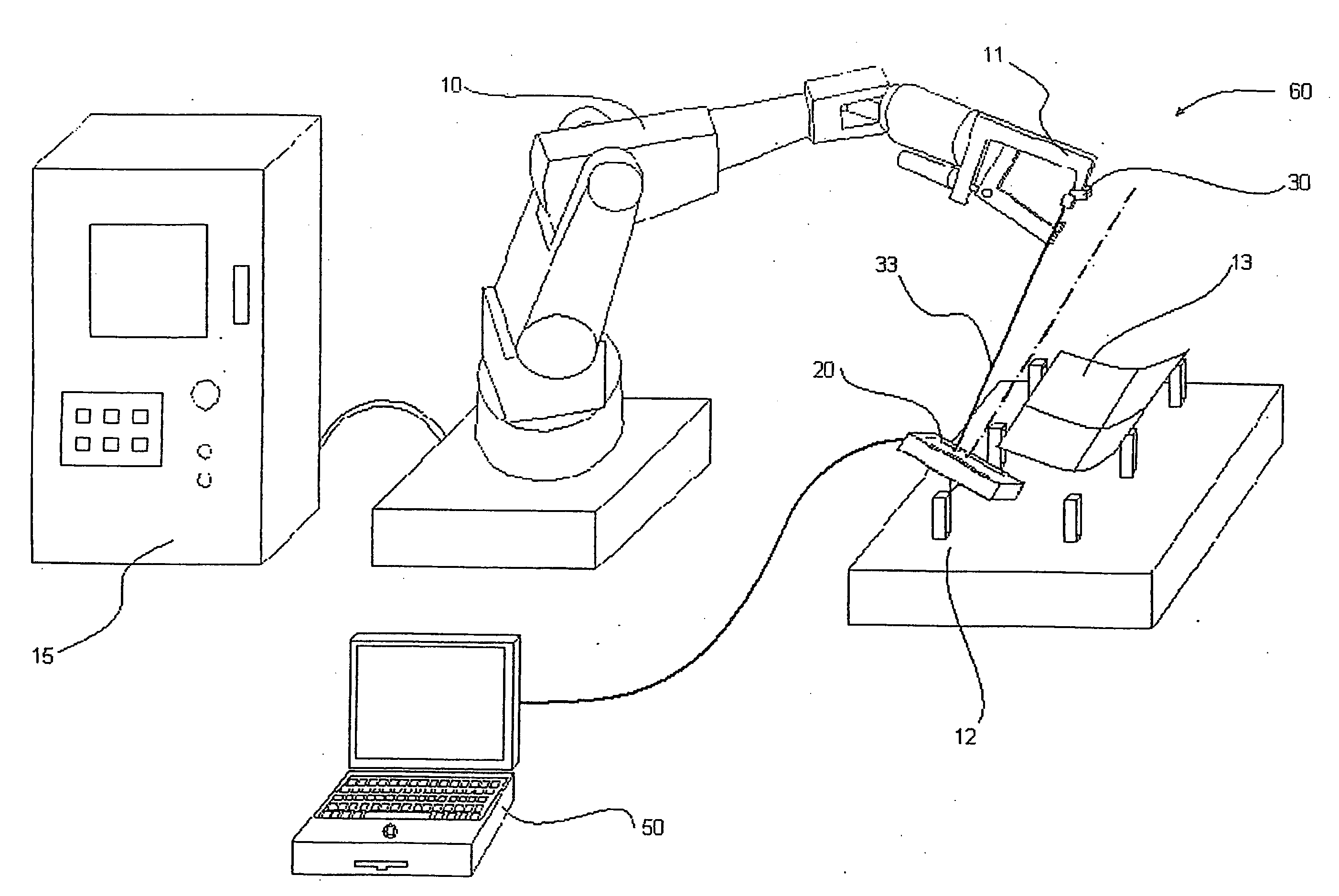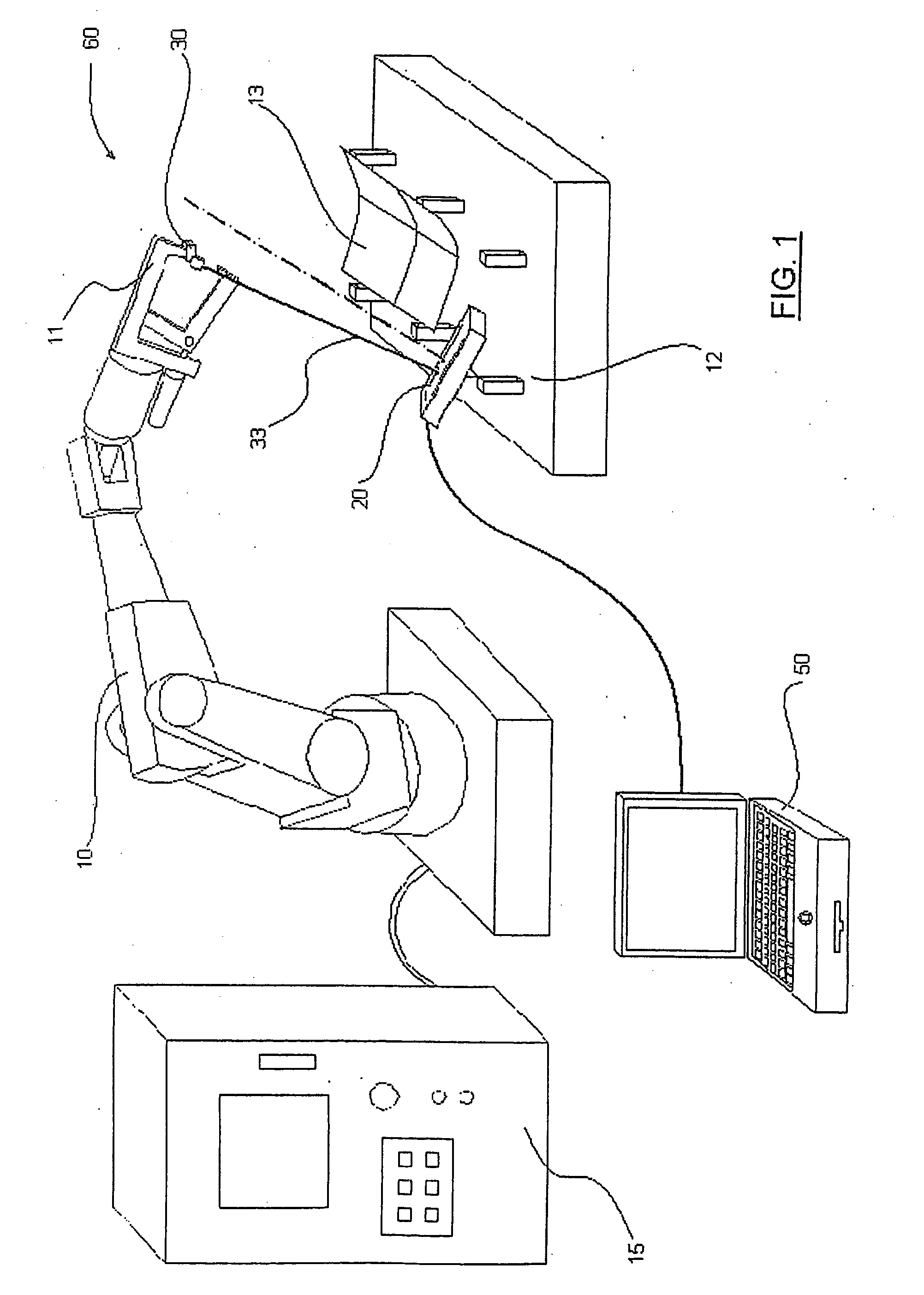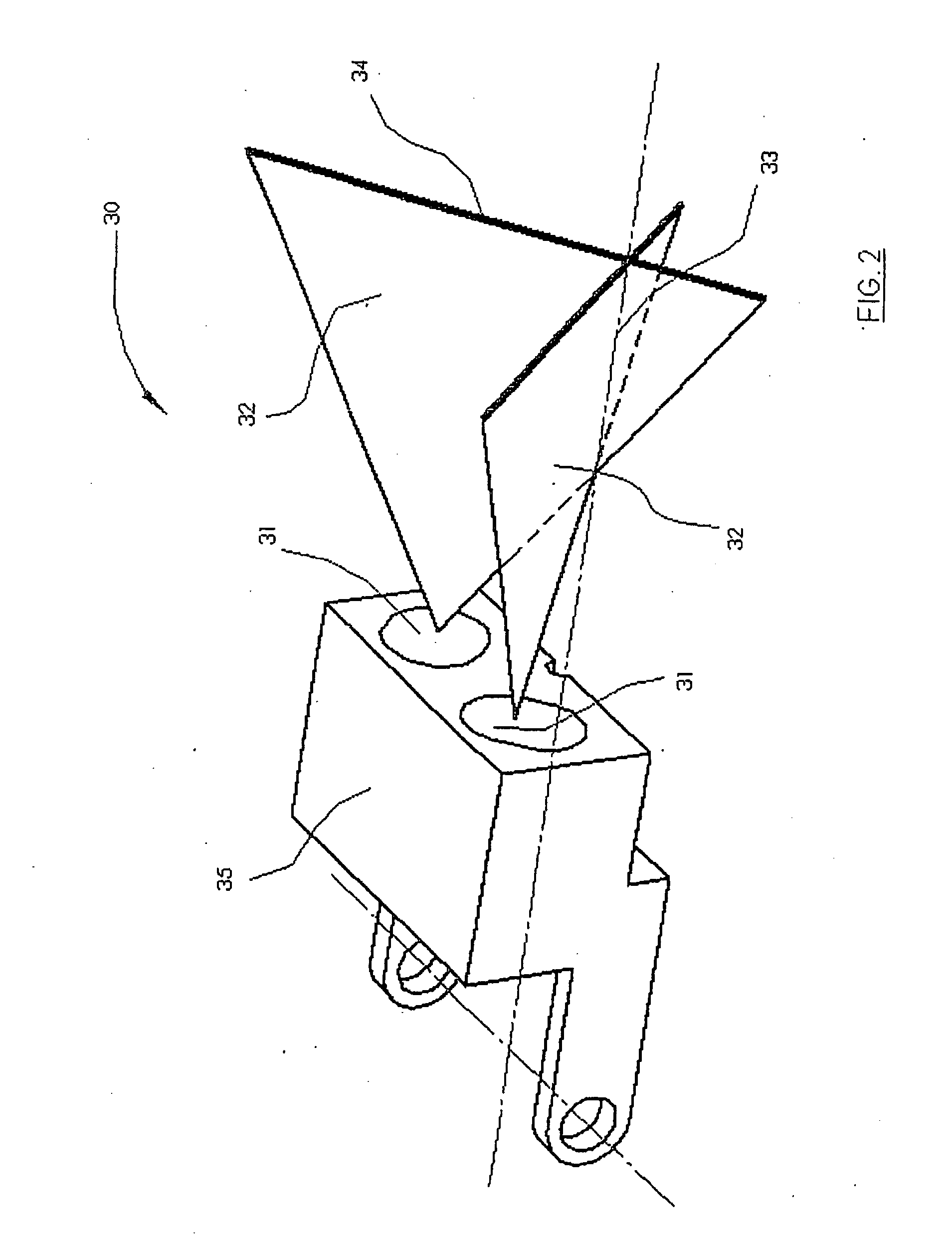Robot-cell calibration
a robot and cell technology, applied in the field of robot cell calibration, can solve the problems of only a portion of the problem of robot calibration, the single “nominal” kinematic model cannot accurately represent the position of each individual robot, and the problem of transporting bulky measurement equipment, etc., and achieves the effect of convenient transportation and cost-effectiveness
- Summary
- Abstract
- Description
- Claims
- Application Information
AI Technical Summary
Benefits of technology
Problems solved by technology
Method used
Image
Examples
Embodiment Construction
[0036]The method and apparatus of the present invention will be described in conjunction with the drawings. It will be understood, however, that the method of the present invention will have applications in other areas of manufacturing and that the description of the present invention with respect to the described embodiments is by way of example only.
[0037]The calibration system 60 of the present invention is shown generally in FIG. 1 as used to perform calibration of an industrial robot 10 connected to a robot controller 15. The robot 10 would typically include an end-effector 11 which might be a tool or some other device rigidly connected to and manipulated by the robot 10. Typically, a fixture 12 holding a part 13 sits in front of the robot 10 that is performing a specific task on the part 13 (e.g. arc welding or laser cutting).
[0038]The calibration system 60 consists primarily of two components: an emitter 30 and a receiver 20. The emitter 30 (see FIG. 2 and FIG. 3) generally c...
PUM
 Login to View More
Login to View More Abstract
Description
Claims
Application Information
 Login to View More
Login to View More - R&D
- Intellectual Property
- Life Sciences
- Materials
- Tech Scout
- Unparalleled Data Quality
- Higher Quality Content
- 60% Fewer Hallucinations
Browse by: Latest US Patents, China's latest patents, Technical Efficacy Thesaurus, Application Domain, Technology Topic, Popular Technical Reports.
© 2025 PatSnap. All rights reserved.Legal|Privacy policy|Modern Slavery Act Transparency Statement|Sitemap|About US| Contact US: help@patsnap.com



